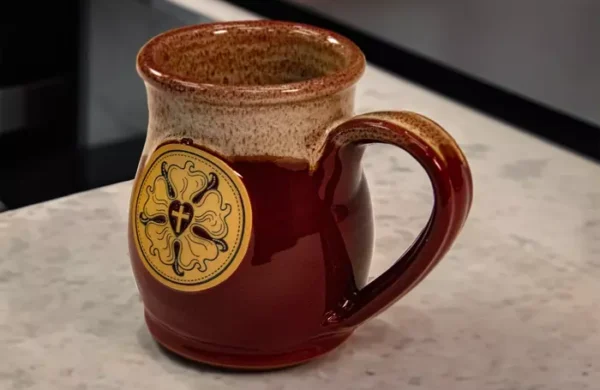
This October, celebrate Pastor Appreciation Month and Reformation season with our limited-edition handcrafted mugs. Each one is hand-thrown by local Minneapolis artists, capturing cozy fall vibes in warm maroon, cream, caramel, and dark chocolate tones. Perfect for gifting to your pastor or enjoying during crisp autumn mornings, these mugs are uniquely crafted, available in extremely limited quantities. Once they’re gone, they’re gone—so grab yours while they last!
Like this:
Like Loading...
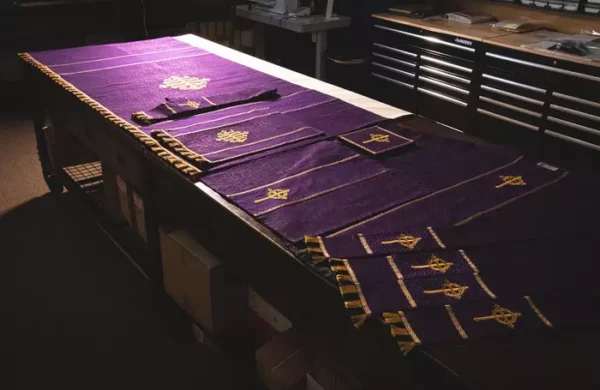
Violet, a color rich in meaning within Christian tradition, symbolizes penitence, humility, and preparation. It is prominently used during the seasons of Advent and Lent, serving as a visual reminder for reflection and spiritual growth. In Advent, violet invites believers to prepare their hearts for Christ’s birth, while in Lent, it calls for repentance and contemplation of Jesus’ sacrifice. The duality of violet also represents both suffering and the royal nature of Christ, highlighting the journey from sin to redemption. This color is featured in various liturgical vestments and altar cloths, adding solemnity to worship during these significant periods.
Like this:
Like Loading...
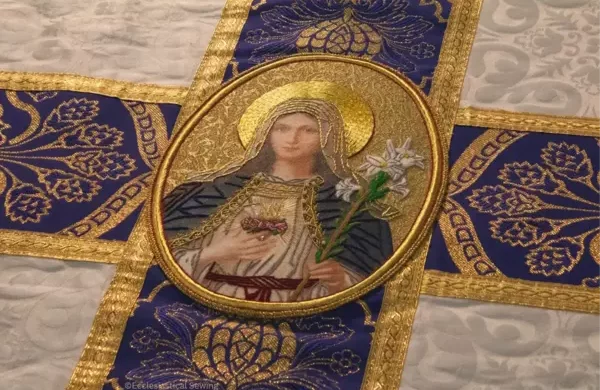
A casket pall, a ceremonial cloth used in funerals, symbolizes respect, equality before God, and resurrection. Originating in medieval Europe, it recalls baptism and new life in Christ. Traditionally white for purity and victory over death, palls were once black to signify mourning. The shift to white reflects a focus on resurrection and eternal life, emphasizing hope over mourning.
Like this:
Like Loading...
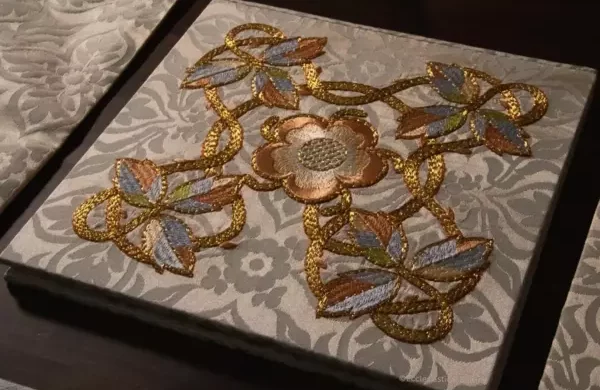
Nearly a year ago, we completed a challenging custom project using ivory silk Chelmsford. At Ecclesiastical Sewing, we pride ourselves on our craftsmanship, blending traditional hand embroidery designs with advanced machine techniques to achieve high-quality results. The final product was stunning and a joy to have in our studio.
Like this:
Like Loading...
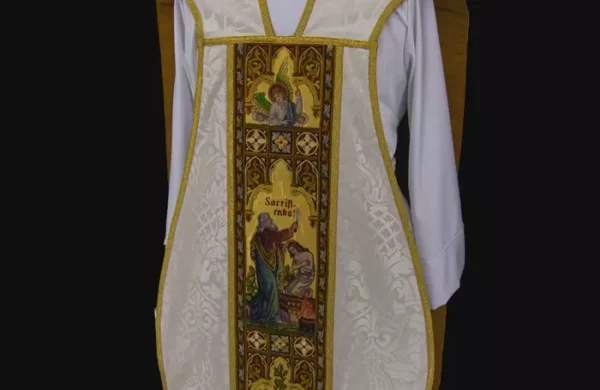
The fiddleback chasuble is a Roman Catholic liturgical vestment known for its narrow, violin-shaped design, differing from the fuller Gothic chasuble. It emerged in the 16th and 17th centuries, gaining popularity for its practicality and ornate appearance, particularly in traditional Masses. The name “fiddleback” reflects its resemblance to a violin’s back, and the word “chasuble” originates from the Latin term for “little house,” highlighting its protective, enveloping nature.
Like this:
Like Loading...
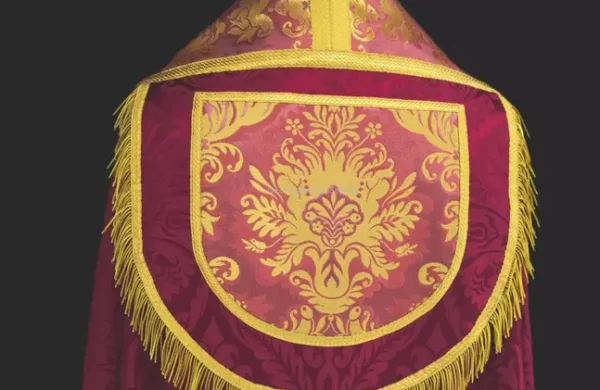
Explores the rich history and symbolism of the liturgical garment worn by clergy in Christian traditions. From its origins in ancient Rome to its evolution as a symbol of solemnity and celebration in modern worship, this article delves into the significance of the cope and its role in religious ceremonies.
Like this:
Like Loading...
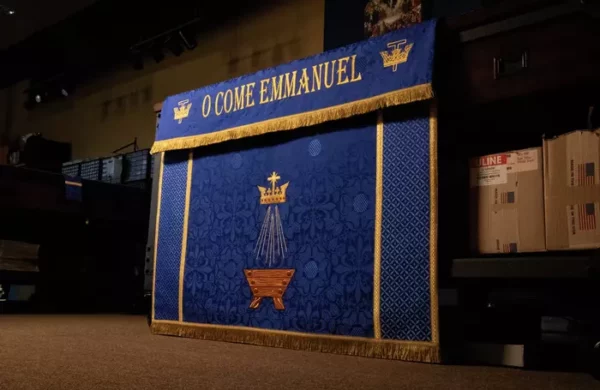
Choosing church vestments should prioritize quality over convenience. Mass-produced options from platforms like Amazon often use cheap materials and are made under poor labor conditions, resulting in inferior products. In contrast, handcrafted vestments from Ecclesiastical Sewing are made-to-order with high-quality European brocade by skilled U.S. artisans. These durable vestments reflect the reverence owed to sacred spaces and the liturgical arts.
Like this:
Like Loading...
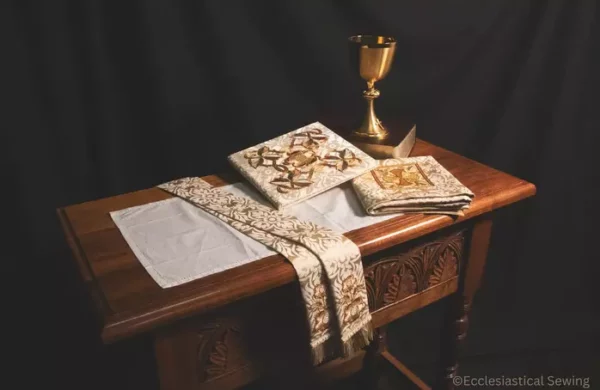
Ecclesiastes teaches us about life’s uncertainties and the need to act wisely. It advises enjoying life’s pleasures, making smart decisions, and trusting in God’s plan. The passage warns against chasing empty pleasures and encourages living with purpose and trust.
Like this:
Like Loading...
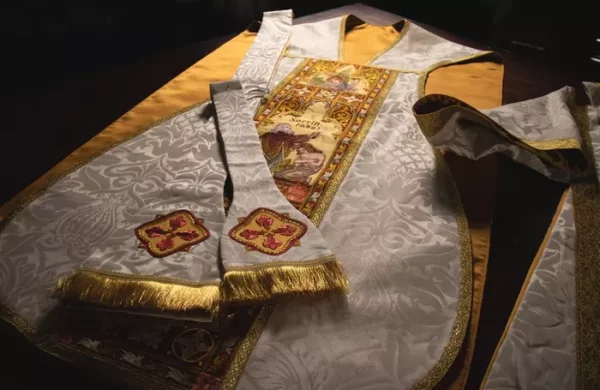
Our company aims to transform church worship by reviving high-quality, traditional vestments. Rejecting low-grade, mass-produced alternatives, we honor centuries of craftsmanship with detailed, meaningful designs. While we can’t serve every church, we strive for excellence and need your help to spread the word. Share our mission and support us in preserving the art of church vestments.
Like this:
Like Loading...
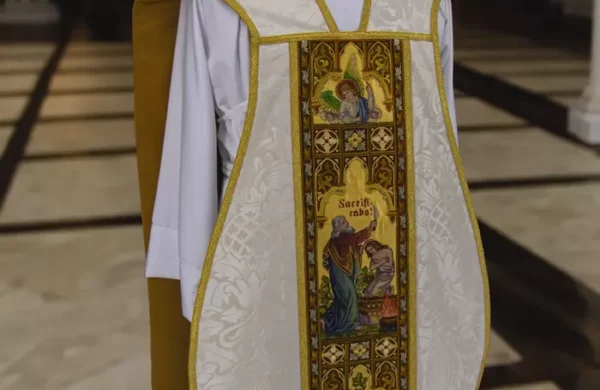
Reviving a century-old Roman fiddleback chasuble, this restoration project breathes new life into a hand-embroidered liturgical treasure. Featuring our Ivory Fairford fabric, the set includes a matching dalmatic, deacon stole, maniples, and regular stole in the traditional spade-end style.
Like this:
Like Loading...
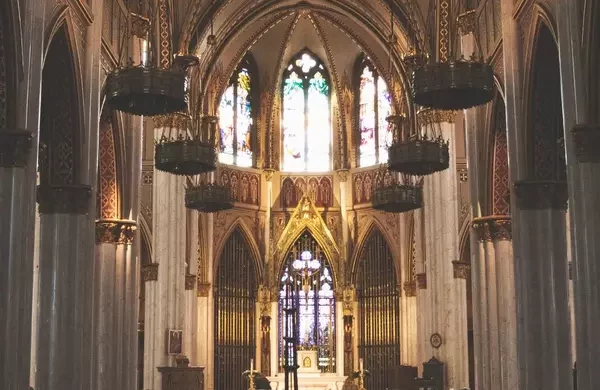
Explore the legacy of stained glass artisan F.X. Zettler, for his mastery of the Munich Style. From award-winning windows to technological innovations, Zettler’s influence extended globally, shaping the market for Catholic church windows. While rooted in tradition, his company’s contemporary projects reflect a departure from the Munich Style, exploring modernistic designs for diverse venues.
Like this:
Like Loading...
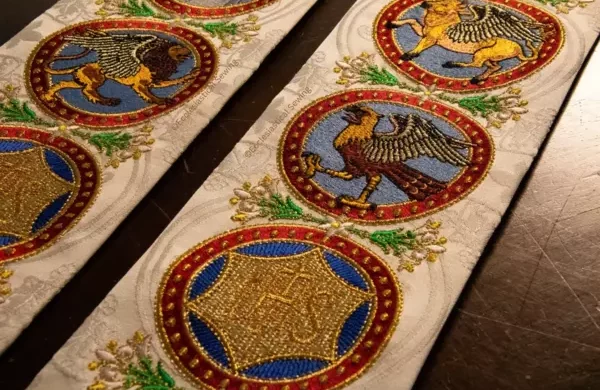
Faith symbols are powerful tools for teaching, often overlooked. Christianity’s symbols, like the Winged Man, Lion, Bull, and Eagle, go beyond decoration, sparking curiosity and fostering learning. We stick to traditional symbols to preserve their deep meaning, rejecting abstract designs that risk diluting significance. Keeping these symbols rich in meaning is our commitment, ensuring they continue to inspire and educate.
Like this:
Like Loading...
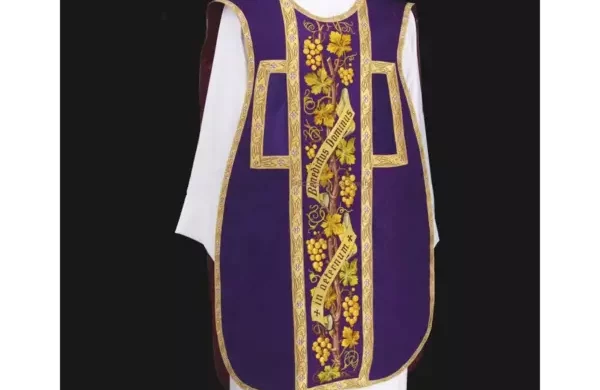
Jesus’ revolutionary command to love transformed religious teachings, promoting personal change and inclusive, selfless love. This agape love inspired societal change, influencing ethics and philanthropy. Philosophers and activists further developed this ethic, shaping societal norms toward love and justice.
Like this:
Like Loading...
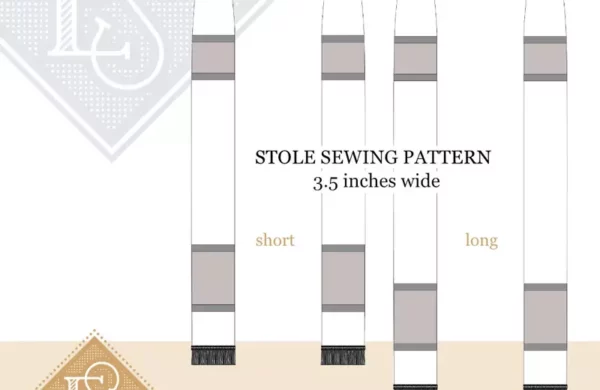
Our vestments may seem expensive, but they reflect our commitment to quality and timeless design. Handcrafted in the USA with top-notch materials, they outlast cheaper alternatives and bring beauty back to worship attire. As a family-owned business, we prioritize excellence over speed and are dedicated to restoring tradition in church apparel.
Like this:
Like Loading...
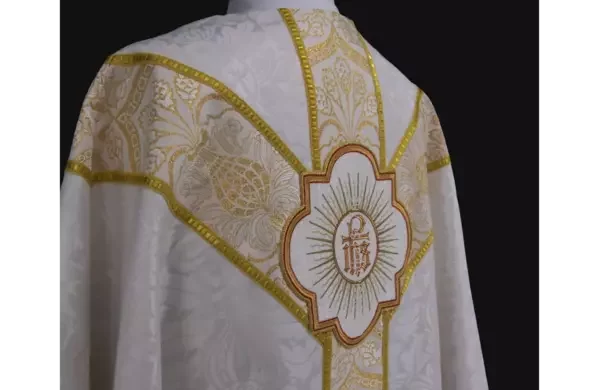
St. Michael’s Prayer, composed by Pope Leo XIII in 1886 after a dramatic vision, seeks protection from Satan. Initially recited by priests after Low Mass, it became widespread until the 1960s liturgical reforms. Despite this, it remains a popular devotional prayer, especially during spiritual conflicts. Pope John Paul II revitalized its use in 1994, encouraging Catholics to recite it for protection against evil.
Like this:
Like Loading...

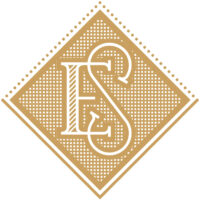














You must be logged in to post a comment.